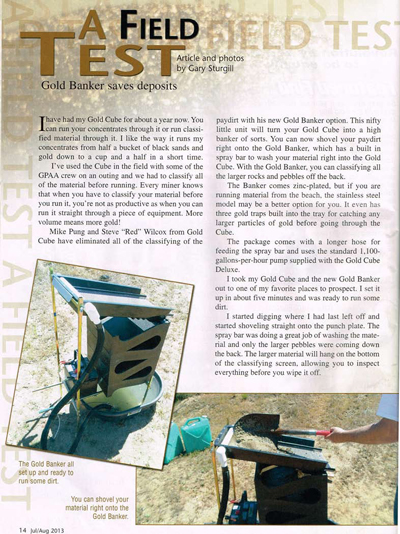Tuesday, October 15 2013
This disturbing new trend in public land management has shifted land use priorities, or so it seems, to give energy needs top priority over mining interests. This drastic change in federal policy is a clear violation of the Mining Law of 1872. Public Land Order 7818, implemented in July and available online in the Federal Register, withdraws more than 300,000 acres of public land in Arizona, California, Colorado, Nevada, New Mexico and Utah from new mining claims for the next 20 years. In addition to stopping all new permits, this withdrawal will restrict mining claims in multiple regions in an effort to create Solar Energy Zones in regions that have been surveyed and identified by the federal government as prime areas for utility-scale solar development. Withdrawal from mineral entry has been used in the past to create national parks and military bases, but this is the first time a withdrawal is being implemented to encourage green energy development. This order, created by Secretary of the Interior Sally Jewell, sets the pace for the Obama administration’s energy and land use policy for the next few years. The Obama administration has committed to clean energy, and Bureau of Land Management Principal Deputy Director Neil Kornze recently stated in a news release that “The Public Land Order protects the integrity of the Solar Energy Zones and helps us meet President Obama’s goal of green-lighting enough public lands to power more than 6 million homes by 2020.” The Interior Department currently estimates that projects developed in the new SEZs could power 1.8 million homes, if they are successfully implemented. President Barack Obama has promised to streamline the process for solar development in SEZs, however there are still several barriers between the implementation of PLO 7818 and the actual creation of energy generating utility-sized solar projects, according to the land rights group, Public Lands for the People. All of the solar plants will have to pass through a vigorous environmental assessment which will culminate in an Environmental Impact Statement, showing that placing solar farms in these regions will not harm any critical ecosystems or species, said PLP President Jerry Hobbs. The projects themselves will require new right-ofways and, in addition to generating electricity, the companies will also have to build an infrastructure which can transmit the new electricity to nearby communities. The process will be long and arduous and, in the meantime, the land will remain closed, he said. This is a brief excerpt from just one of the interesting and informative articles found in the October/November 2013 Pick & Shovel Gazette, published by GPAA. Download the full 28-page issue for free! Tuesday, October 01 2013
Whether you live in California and want to fully understand how your dredging rights were banned beginning several years ago, or live elsewhere and hear the story so you can prevent it from happening in your state, the following exerpt from the Western Mining Alliance newsletter explains the history of suction dredging, how the California ban was put into effect, and about the Coho Salmon's role in all this... How They Banned Dredging It’s interesting to deconstruct how the dredging ban came about. It’s a good study in how the environmental groups, with the support of the government regulators, used fabricated information to declare an emergency; labeled suction dredgers as destructive to the environment and convinced the State to spend millions of dollars to ban dredging and then to pursue this ban in court. To fight and win this dredging ban we must first understand how they succeeded in banning dredging. By “they” we mean the coalition of environmentalists and government regulators acting in concert to defy Congress and your Constitutional rights. Suction dredging began in the 1950’s. The advent of underwater breathing apparatus by Jaques Cousteau in the 1940’s was quickly adopted by placer miners as a means to reach areas previously passed over by miners. The rivers had been relatively untouched by miners because of the difficulty working underwater. The new ability to work the bottoms of rivers led to the quick expansion of suction dredging throughout the State of California and western rivers. In the 1950’s suction dredging was completely unregulated. Regulation began in 1961 when the California legislature passed SB1549 which was focused on the effects of suction dredging on salmon. The first dredging regulations were published in 1962 and the Department began issuing permits in 1962, however, the possession of a permit wasn’t mandatory. The dredging regulations were the result of a study commissioned by the Department of Fish and Game in 1960 which indicated some restrictions were required to protect spawning salmon. The report also recommended the maximum size of the suction dredge be restricted to a 8” nozzle size. From 1960 to 1994 dredging and dredging regulations remained largely unchanged but in 1994 the Department completed their first environmental impact report which resulted in further restrictions on locations, times and equipment and made the possession of a permit mandatory. An environmental impact report is required by the California Environmental Quality Act (CEQA) for all projects after 1973. Suction dredging was a project subject to permitting prior to 1973. By the law it was exempt from CEQA. The time to fight CEQA was 1993 but there were few of us that had heard of or understood CEQA to the degree we do today. Regardless, by the law, suction dredging is exempt from CEQA and there are sufficient court case rulings that affirm this. The miners grudgingly accepted the new regulations and within two years the Department of Fish and Game was already in the process of creating a new EIR and a new set of regulations. Once the CEQA door was opened and the environmental groups realized they could use their favorite tool to ban dredgers from the rivers they began their assault on dredging. An organization of miners, including Public Lands for the People, challenged the Department over this new effort and the Department dropped the new EIR and left the 1994 regulations intact. The environmentalists, knew suction dredgers were an easy target. As opposed to large businesses, and industries with coalitions and lawyers, we were largely undefended. Being largely solitary operators focused on our efforts to recover gold we didn’t understand CEQA, nor did we care to. While we were busy with our heads down in the river, the environmentalists were petitioning the Department to ban suction dredging and to conduct a new EIR. Click here to download the 21-page .pdf. You will find the full article on the dredging ban on pages 13-15, but with so much good information, you'll want to read every page.
Sunday, September 01 2013
How Prepared Are You and Your Family? Whether it's a Severe Recession, Flood, Earthquake, Hurricane, or complete End of the World as we know it, each of us MUST be PERSONALLY PREPARED to "weather-the-storm" — and that means kids too. When crisis strikes, (or you see it on the six o'clock news) the time to prepare is over. Sort of like trying to buy insurance when the house is on fire. NOW is the time to SERIOUSLY REVIEW your preparedness supplies while time is on your side. Don't delay, but do involve your children in your prepping plans. Experts know that preparing kids ahead of time and helping them feel like part of the plan is extremely important to their health and well-being. One of the wisest steps toward emergency preparedness you'll ever make is to have long storing food reserves on hand— enough for 2 to 6 weeks (a 4 to 12 month reserve would even be better). Food-related problems are averted if kids are already acclimated to freeze-dried food in advance. Introduce foods to your children BEFORE emergencies so there are no picky-eater meltdowns at a critical time. Here are some tips:
Emergency food supplies are not only a good idea at home, but are ideal for long-term storage at your hooch when you're out gold prospecting, or in a family cabin you might only use during hunting season or on weekends during the summer. TV shows like Doomsday Preppers might seem extreme, but the principles of being prepared are mainstream and very sensible. And what better way to prepare than to make sure you have emergency food in reserve "just in case." Sunday, August 18 2013
The goal of Public Lands for the People (PLP) is to uphold constitutional and statutory rights related to the use of appropriated and unappropriated public lands by educating the public about their rights and laws that apply in their activities, and educating the government agencies in their application of those laws.
If, while you are out gold prospecting or mining, metal detecting, working your claim, or otherwise recreating, you are challenged by a respresentative of a governmental agency or by a public servant who wants you to stop doing what you are doing, it is recommended by PLP that you do the following: 1. Politely ask if you are breaking any laws. If you are told that you are breaking a law, then ask for an explanation of the law and any municipal code that may pertain to the law. 2. Do as you are asked by the government representative, then ask them for their name, badge number, position, and agency and district they represent. Record this info. in writing along with the date, time, and location you are in when this happened. 3. Please provide the info. you collect to PLP and they will advise you of the appropriate procedure to follow. 4. If you have a pleasant response from any of the representatives you come into contact with, such as they were being informative, cooperative, or helpful, PLP would like to know about it, too.
PLP is a 501(c)(3) Non-Profit Organization whose Mission Statement is: "TO REPRESENT AND ASSIST OUTDOOR USER GROUPS AND INDIVIDUALS INTERESTED IN KEEPING PUBLIC AND PRIVATE LANDS OPEN TO PROSPECTING, MINING, AND OUTDOOR RECREATION THROUGH PUBLIC EDUCATION, SCIENTIFIC DATA, AND LEGAL MEANS." For more information about the great work being done by Public Lands for the People, visit their website www.plp2.org Thursday, August 01 2013
Would you like a FREE box set of Gold Fever 2011 ($65 value) produced by Gold Prospectors Association of America? Make any purchase during the month of August, and your order could be randomly drawn at the end of the month to win the 7-disc box set packed full of your favorite Gold Fever moments from 2011. Join host Tom Massie as he travels the world in search of one of the planet’s most precious metals ... Gold! From his backyard in California to the glaciers of Greenland, this set contains 13 commercial-free episodes! Sunday, July 07 2013
Monday, July 01 2013
The Gold Cube is now shovel ready! Take the hassle out of pre-classifying and increase your yield at the same time! The Gold Banker was field tested by Gary Sturgill, Trade Show Manager for the Gold Prospectors Association of America (GPAA). His review appears on pages 14-15 in the July/August 2013 issue of Gold Prospector Magazine. Gary rated this new product 10 out of 10 for its easy for assembly, durability, and time savings. If you don't have a copy, here is what Gary had to say: "I have had my Gold Cube for about a year now. You can run your concentrates through it or run classified material through it. I like the way it runs my concentrates from half a bucket of black sands and gold down to a cup and a half in a short time. I've used the Cube in the field with some of the GPAA crew on an outing and we had to classify all of the material before running. Every miner knows that when you have to classify your material before you run it, you're not as productive as when you can run it straight through a piece of equipment. More volume means more gold! The Gold Banker eliminates the pre-classifying of the paydirt. This nifty little unit will turn your Gold Cube into a high banker of sorts. You can now shovel your paydirt right into the Gold Banker, which has a built in spray bar to wash your material right into the Gold Cube. With the Gold Banker, you can classify all the larger rocks and pebbles off the back. The Banker comes zinc-plated, but if you are running material from a saltwater beach, the stainless steel model may be your best option. It even has 3 gold traps built into the tray for catching any larger particles of gold before going though the Cube. The package comes with a longer hose for feeding the spray bar and uses the standard 1,100 gallons per hour pump supplied with the Gold Cube Deluxe. I took the Gold Cube and the new Gold Banker out to one of my favorite places to prospect and set it up in about 5 minutes and was ready to run some dirt. I started digging where I had last left off, and started shoveling straight onto the punch plate. The spray bar was doing a great job of washing the material and only the larger pebbles were coming down the back. The larger material will hang on the bottom of the classifying screen, allowing you to inspect everything before you wipe it off. Monday, June 10 2013
News Bulletin From Fisher Labs: This Wednesday evening, June 12, at 9:00 PM Central Time, the Travel Channel will be showing premier episodes of their new metal detecting reality show: Dig Wars. There will be two back-to-back 30 minute episodes about three pairs of detectorists that travel the country searching for artifacts, relics and coins. Three of the six hunters will use Teknetics and Fisher metal detectors and featured throughout the season will be the T2LTD, G2, F70, F75LTD and Gold Bug models. Mark your calendar and be sure to tune in to see Fisher and Teknetics metal detectors in action -- 9:00 PM Central and 8:00 PM Mountain (and re-aired 3 hours later). Wednesday, June 05 2013
Since gold is 19 times heavier than water, it will drop out of a moving current and settle into streambed gravels and other places whenever the water flow is no longer strong enough to keep it moving. Gold is also heavier by volume than the average weight of the sand, silt, and rocks that make up an average streambed. Because of the disparity in weight, when streambed material is being washed down a waterway, most of the gold will work down to the bottom of the streambed material. These "drop spots" are the best places to find gold.
Are there downed trees across the stream from winter storms? Check the gravels behind the obstruction. Tree roots and dense clumps of weeds along a stream bank can also trap gold, so check the dirt in these areas, too. Boulders are another natural gold trap, but be very careful when trying to move large rocks to check underneath them for gold. If you cannot move the boulders, sample around the base and in cracks and crevices. Natural "potholes" in rocks are excellent gold catchers. Debris can settle in the po holes and act as a "cap" for bits of gold that have been washed into the depression. Often the cap will completely hide gold that is underneath it, so check thoroughly. Another tip is don't be afraid to revisit waterways you've tested in the past, even if you think they're all worked out. Mother Nature changes rivers and streams every winter. The amount of snow melt and rain differs each year, which means "new" gold is always on the move... waiting for YOU to find it with your pan, sluice, highbanker, or dredge. Good luck, be safe, and have fun! Wednesday, April 03 2013
Weighing gold and gemstones can be a bit confusing. Miners use pennyweight and jewelers use grams. Gemstones are weighed in carats. The word "carat" comes from ancient India where carob seeds were used as small consistent weights. The word "pennyweight" comes from the old Gold Rush days when a miner would compare the weight of his gold dust against the weight of a penny. Keep in mind that a penny in 1849 was somewhat larger than it is today.
Pennyweight Conversions 1 pennyweight (dwt) = 7.776 carats 1 pennyweight (dwt) = 1.55 grams 31.1 grams = 1 troy ounce 1 pennyweight (dwt) = 24 grains 480 grains = 1 troy ounce 1 pennyweight (dwt) = 0.05 troy ounce 20 pennyweight (dwt) = 1 troy ounce 12 troy ounces = 1 troy pound Carat Conversions 1 carat = 0.20 grams 1 carat = 0.1287 pennyweight 1 carat = 0.0064 troy ounce 1 gram = 5 carats 1 pennyweight 7.776 carats 1 troy ounce = 155.5 carats |
|
Nugget of News Blog |






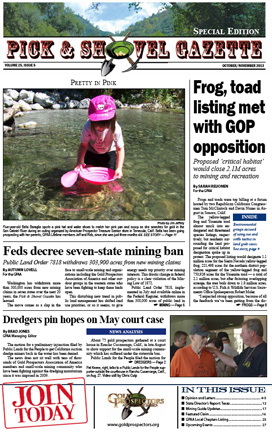
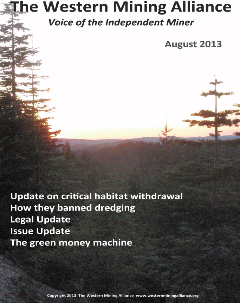
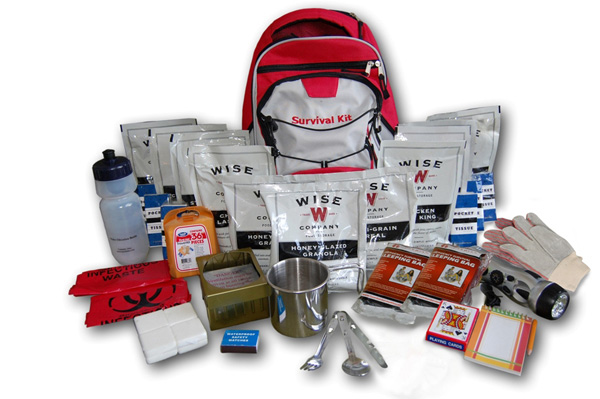
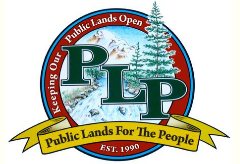
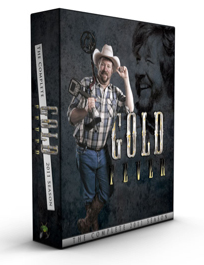
 Celebrate CHRISTMAS IN JULY! Not only do you get FREE SHIPPING on purchases of $350 or more, but now you will also get a FREE GIFT! Might be a how-to book, a treasure scoop, a keychain, a small bag of paydirt, or another cool item, so be prepared to be pleasantly surprised! Throughout the month of July only, just enter the word CHRISTMAS in the "Extra Information" field when placing your order of $350 or more, and you'll find a little something extra and FREE
Celebrate CHRISTMAS IN JULY! Not only do you get FREE SHIPPING on purchases of $350 or more, but now you will also get a FREE GIFT! Might be a how-to book, a treasure scoop, a keychain, a small bag of paydirt, or another cool item, so be prepared to be pleasantly surprised! Throughout the month of July only, just enter the word CHRISTMAS in the "Extra Information" field when placing your order of $350 or more, and you'll find a little something extra and FREE  in the box when your order arrives. Merry! Merry!
in the box when your order arrives. Merry! Merry! 